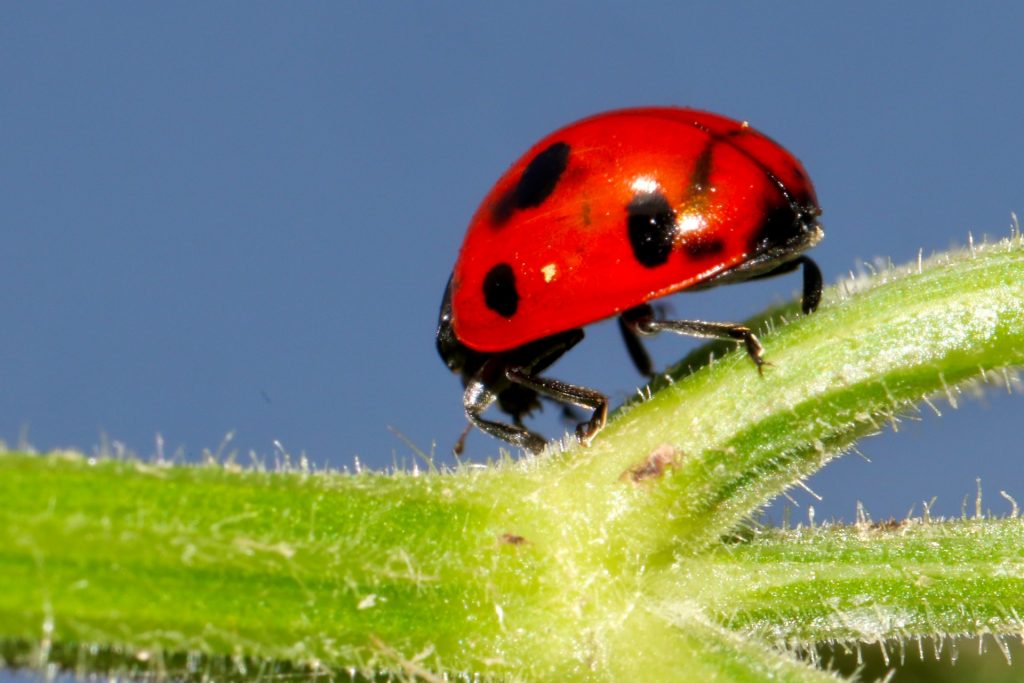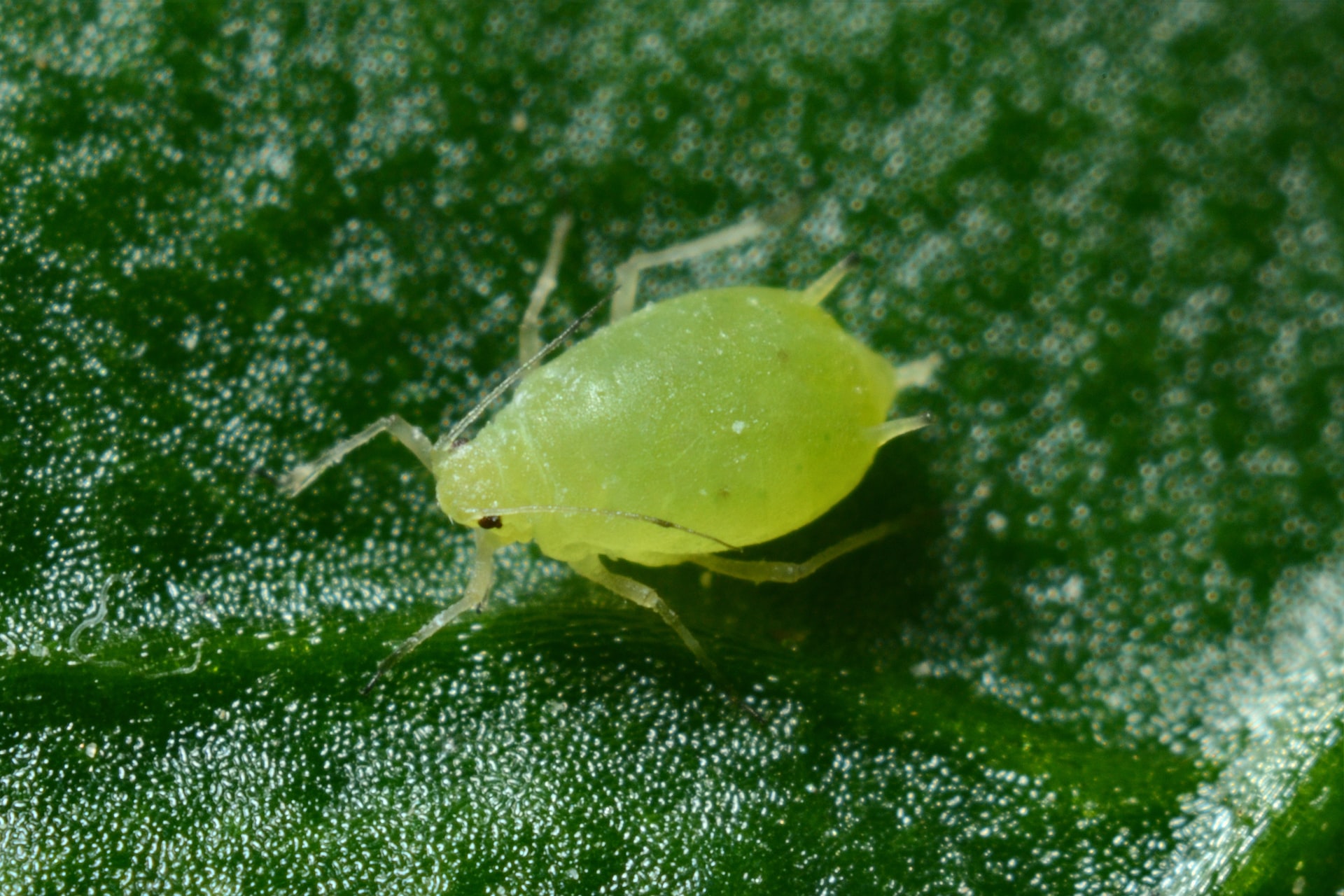Thrips are predatory insects that feed on both plants and other insects. These sap-sacking insects can drill openings on the leaves, flowers, and buds of your cannabis plants, drawing the juices from them and leaving them dehydrated.
Thrips can be stubborn. Most growers opine that once thrips invade your cannabis, it can be challenging to get rid of them completely, but you can control them until you harvest your plants.
The problem with thrips is that they feed in colonies. Huge numbers can overwhelm your plants, sucking sap from your plants and leaving them to die. The affected leaves will become blotchy, wilt, and die; this can reduce the photosynthetic processes of your plant and maim their growth and development.
And if the attack on your plant is extensive, they make it hard for the plant to heal in time to blossom and bear buds worth harvesting.
Dealing with thrips isn’t tough in the vegging stage as you can use aggressive pesticides or organic remedies like Neem to get rid of them. However, during flowering, your plants are delicate, and you must think twice about the pesticides you use.
For instance, neem oil is very effective at fighting thrips but should never be used during flowering because it affects the taste and aroma of your buds.
On the other hand, using non-organic pesticides might not be a welcome idea if you want to grow your plants 100% organic. Thus, growers must tread carefully when dealing with thrips at flowering.
How To Get Rid Of Thrips On Flowering Cannabis
The best way to get rid of thrips during the flowering stage is to use predatory insects that feed on thrips. Using insects like ladybirds will get rid of the thrips without affecting the taste and aroma of buds. Neither will it stagnate the development of the buds because predatory insects don’t leave your plants needing healing.
The problem with using predatory insects is that they too die, and you’ll have to pick the dead insects from your plants. But it’s safer to pick dead ladybirds from the plants than deal with weird-smelling buds after using questionable pesticides.
You can also give the plants the good old washing. Using little pressure, wash off the affected parts of the plant, focusing the jet on the colonies to detach them from the plants and wash them away.
Washing the plants isn’t the most effective way to fight thrips. It might even seem dumb, but when you’re only a few days to harvest, you’d rather control them by washing them away than spray the buds with toxic insecticide.
Target the leaves and below the leaves where thrips make colonies. Still, you want to be gentle on the flowers, do not let the turbulent waters knock them out.

RELATED READ: Can I Use Neem Oil During Flowering?
Other Ways To Control Thrips During Flowering
Thrips can be dealt with in many ways, but during flowering, your choices narrow down because of the risk of pest eradication at flowering— the plant’s most fragile stage. Here are ways to employ when thrips attack your plants during flowering;
1. Use pyrethrins
Pyrethrin insecticides are not organic, but they are gentle on your plants and you. The problem with pyrethrins is that they aren’t friendly to bees, and so you’d want to spray the plants late in the evening when the bees aren’t active.
The advantage of using pyrethrins over other pesticides is that pyrethrins degrade so fast— two days— making them the most preferred for backyard gardens.
Since they degrade faster, pyrethrins are a better option to use during flowering than neem oil. They will not leave a weird smell on your buds.
2. Try insecticidal soaps
Insecticidal soaps are gentle on your plants, and the soap doesn’t stay for long. The soaps kill the bugs by weakening their outer shells. Soaps are effective but not fast-acting. Thus you may have to spray the buds more than once to eradicate the thrips.
Still, I’d only consider using insecticidal soaps when I have four weeks to harvest just to allow everything to degrade before harvesting. If you only have a couple of weeks to harvest, using predatory insects is a far better idea.
3. Use Spinosad
Spinosad products are organic and thus harmless to your plants. They’re tough on pests but kind to your plants.
If you have a few more weeks to harvest, you can use them. 3-4 weeks to harvest is enough time for the pesticide’s toxicity to die off (though Spinosad products are considered ok to use up to 3 days to harvest).
You should still give the plant enough time because though the product is organic, you want to slim any chances of affecting your flowering plants.
Spinosad kills the adult thrips and their larvae. This can reduce their population abruptly, cutting the harm on your plant within hours after application.
RELATED READ: Can Cannabis Plants Recover from Root Rot?
What Do Thrips Look Like?
Thrips are tiny winged insects, mostly green, that perch on the leaves, flowers, and stalks of the plan to draw sap. They can also appear in the form of yellowish worms that leave a silvery trail on the leaves after they’ve sucked it. You will also notice black spots on the leaves, which is proof they exist even when you can’t spot them.
Thrips come in many varieties. And sometimes the species that attacked yours isn’t the same as the ones in my region. But they all sap from your plant, and so the plant will show the same symptoms for cases of different thrips invasion.
The holes they leave on the plant are more irregularly shaped than spider mite bites. And they leave the slimy trail on the leaf after they attack it. It will appear like a slimy worm left a track, but even the winged thrips leave the slimy silvery trail.
Some thrips feed entirely on insect meal. These are good for your cannabis plants as they eat other pests. So the process of fighting thrips is an act of balance; you kill the bad ones and retain the good ones.
Thrips are easier to deal with before they multiply out of control. You can use sticky traps, laying them on top of the soil to trap the adult thrips. The thrips will be stuck, and that’s how you know your plants have been invaded.
Frequently Asked Questions
Thrips are tough to get rid of because most insecticides only kill the adults and larvae while leaving the eggs to hatch. The thrips’ eggs are the reason why you spray more than once to get rid of the thrips completely.
Thrips can hurt the plant’s natural growth and development processes but rarely kill cannabis plants. The leaves they attack will shrivel and might eventually fall off, but a thrips invasion is never a fatal attack. However, thrips open the plant tissues for fungal and bacterial infections, so the risk must be averted by addressing thrips as soon as you notice they exist.
Cannabis plants mostly survive a thrips invasion, but the quality and size of your yield will be inferior when you harvest from sickly plants.
Thrips sap fluids from the petals, leaving the plant with necrotic patches. The affected flowers will show dryness around the holes they ate away. The sickly flowers can age prematurely, dwindling the yields. Thrips also feed on pollen, thus will multiply faster during flowering.
In summary, dealing with thrips during flowering isn’t easy, and when you adopt the wrong approach, you can inhibit the natural weed taste and aroma. Using predatory insects helps you eradicate the thrips faster and without reducing the quality of your buds.
External references:

